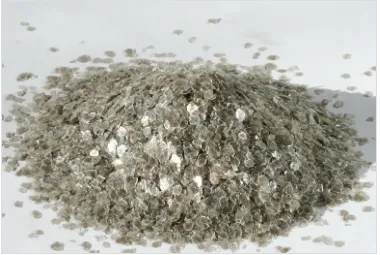Feb . 19, 2025 05:33
Back to list
edible mica powder
Mica powder has gained significant popularity among artisans, DIY enthusiasts, and beauty product manufacturers. As with any widely used product, questions about its origin and properties often surface. One common question is whether mica powder is a natural substance. Understanding the nature, sourcing, and applications of mica powder can help consumers and manufacturers make informed decisions.
From a technical standpoint, mica powder provides desirable properties such as insulation, heat resistance, and electrical resistance, making it invaluable in industrial applications. Its natural occurrence and unique chemical structure allow it to function effectively in high-temperature settings, contributing to its usage in sectors like automotive and electronics. Engaging with mica powder necessitates an understanding of safety precautions. Although mica itself is generally considered safe, inhalation of fine particles in the powder form can be harmful. It is essential to ensure proper protective measures, such as masks or adequate ventilation, especially when handling mica powder in large quantities or for prolonged periods. Advancements in technology have also led to synthetic mica production, created to replicate the properties of natural mica without the associated ethical concerns of mining. Synthetic mica offers consistency in quality and color, expanding its applications in industries that demand high precision in material properties. In conclusion, mica powder is a naturally derived product with a broad spectrum of applications. Its appeal is grounded in its functionality and visual allure. Understanding the origins, ethical considerations, and safety aspects of mica powder can guide buyers and manufacturers toward responsible sourcing and usage. As the demand for transparency in product sourcing grows, consumers are increasingly empowered to make choices that reflect their values, ensuring that the sparkle of mica powder doesn’t come with an ethical cost.


From a technical standpoint, mica powder provides desirable properties such as insulation, heat resistance, and electrical resistance, making it invaluable in industrial applications. Its natural occurrence and unique chemical structure allow it to function effectively in high-temperature settings, contributing to its usage in sectors like automotive and electronics. Engaging with mica powder necessitates an understanding of safety precautions. Although mica itself is generally considered safe, inhalation of fine particles in the powder form can be harmful. It is essential to ensure proper protective measures, such as masks or adequate ventilation, especially when handling mica powder in large quantities or for prolonged periods. Advancements in technology have also led to synthetic mica production, created to replicate the properties of natural mica without the associated ethical concerns of mining. Synthetic mica offers consistency in quality and color, expanding its applications in industries that demand high precision in material properties. In conclusion, mica powder is a naturally derived product with a broad spectrum of applications. Its appeal is grounded in its functionality and visual allure. Understanding the origins, ethical considerations, and safety aspects of mica powder can guide buyers and manufacturers toward responsible sourcing and usage. As the demand for transparency in product sourcing grows, consumers are increasingly empowered to make choices that reflect their values, ensuring that the sparkle of mica powder doesn’t come with an ethical cost.
Prev:
Next:
Latest news
-
Transforming Surfaces with Mica-Enhanced Paints in Coatings and DecorationNewsJul.02,2025
-
The Ultimate Guide to Mica-Based Luminous Colors with Pearlescent PigmentNewsJul.02,2025
-
The Critical Role of Mica in Industrial Applications in Welding and Oil FieldsNewsJul.02,2025
-
Revolutionizing Automotive Aesthetics with Modified Plastics Pearlescent PigmentsNewsJul.02,2025
-
The Secret with Mica Powder for Cosmetics Behind Radiant, Natural MakeupNewsJul.02,2025
-
Enhancing Performance in Polymer Applications with Mica Powder for RubberNewsJul.02,2025
Products categories









